The Rise of Landfill Gas to Energy
In the last decade, landfill gas has fueled a small but growing renewable energy industry.
January 20, 2012
Michael Fickes, Contributing Author
Landfill gas (LFG) provides power for one million homes and heat for 737,000 homes across the country. It provides 14 billion kilowatt-hours of electricity and 102 billion cu. ft. of LFG for direct use by industry. It contributes to the nation’s supply of natural gas and clean-burning fuel for vehicles.
The environmental benefits of these LFG uses are huge. According to the U.S. Environmental Protection Agency (EPA), the use of LFG reduced the consumption of oil in the United States by about 229 million barrels of oil last year.
Using LFG also reduces greenhouse gas emissions. EPA says that landfills rank as the third-largest human-generated source of methane emissions in the United States. Among greenhouse gases, methane, the fuel component of LFG, is one of the most potent. For instance, it is 21 times stronger than carbon dioxide.
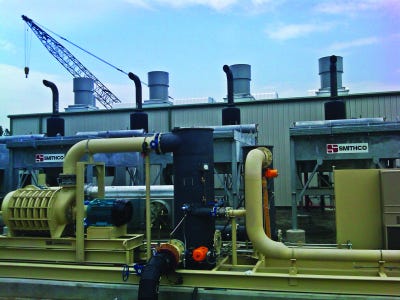 The EPA also estimates that a typical LFG energy project collects and uses 60 to 90 percent of the methane emitted by a landfill.
The EPA also estimates that a typical LFG energy project collects and uses 60 to 90 percent of the methane emitted by a landfill.
Thanks to the environmental benefits of putting LFG to use, landfill-gas-to-energy has begun to emerge as a renewable energy industry.
Consider the landfill-gas-to-energy (LFGTE) project at the Newton County Landfill in Brook, Ind., for example. There, LFG is helping to manufacture egg cartons.
One of the largest landfills in the country, Newton County, owned by Phoenix-based Republic Services Inc., receives nearly 2.7 million tons of trash per year. Recently, the landfill began sending LFG to the neighboring Newton County Renewable Energy Park through a 2,500-foot pipeline.
At the industrial park, Canadian firm Urban Forest Recyclers Inc. (UFR) of Swift Current, Sask., manufactures packaging, such as egg cartons, from recycled fiber. The process blends mixed newsprint and cardboard into a slurry that is poured into molds. The LFG fuels the system of blowers used to dry the molds.
UFR is the industrial park’s first tenant. “As the park attracts tenants, we plan to use the gas to generate more green power,” says William Held, senior director, renewable energy with Republic.
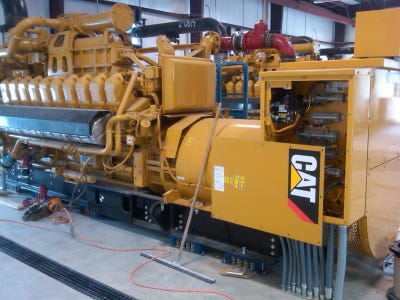 Republic’s partners on the project include Middletown, N.Y.-based Cornerstone Environmental Group LLC, which engineered the LFG collection system and the pipeline, and Lafayette, La.-based CPL Systems, which designed and built the gas processing plant that conditions the gas. The CPL system can accommodate gas flows of 2,000 to 16,000 cubic feet per minute (CFM) to process more gas as the park leases to more companies.
Republic’s partners on the project include Middletown, N.Y.-based Cornerstone Environmental Group LLC, which engineered the LFG collection system and the pipeline, and Lafayette, La.-based CPL Systems, which designed and built the gas processing plant that conditions the gas. The CPL system can accommodate gas flows of 2,000 to 16,000 cubic feet per minute (CFM) to process more gas as the park leases to more companies.
Future tenants might use the gas to generate electricity to power manufacturing equipment just as UFR does. Others might use it to power lighting or to generate hot water. These uses have become common since LFGTE projects began to proliferate in the early 1990s.
Igniting LFGTE Projects
Since 1994, the U.S. Environmental Protection Agency (EPA) has been encouraging landfill operators to develop LFGTE projects through its Landfill Methane Outreach Program (LMOP). The program, voluntary for landfill owners and other participants, is an effort to reduce emissions of methane, a harmful greenhouse gas, from landfills by spurring LFGTE projects. The Newton County project is one of 568 operational LFGTE projects listed in the LMOP registry.
Of those 568 projects, 415 generate electricity. An additional 34 co-generate a combination of heat (used to heat water or space) and electrical power (to run equipment and lighting systems).
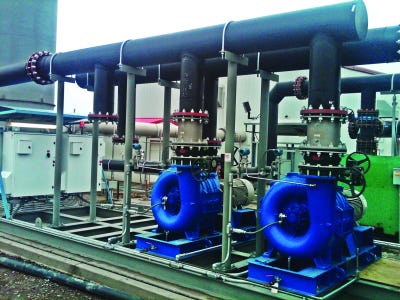 Another 123 projects use landfill gas to provide heat, to heat water, to evaporate leachate or to satisfy some other operational need that requires energy.
Another 123 projects use landfill gas to provide heat, to heat water, to evaporate leachate or to satisfy some other operational need that requires energy.
There are 26 projects producing pipeline-quality high-BTU gas with characteristics similar to natural gas.
Finally, four projects are producing compressed natural gas (CNG) and liquefied natural gas (LNG) for vehicle fuel.
An Expanding Industry
With 568 fully operational projects, LFGTE is emerging as a self-sustaining renewable energy sector. According to EPA, the pace of LFGTE project development has been increasing, thanks to tax credits and grant programs established by the federal government and renewable portfolio standards created by the states.
One particularly popular grant program created by the American Recovery and Reinvestment Act of 2009 — the Section 1603 Treasury Grant Program for Solar and Renewables — spurred development by providing grants in lieu of tax credits. Under the program, developers could receive grants when the work was done instead of having to wait until the next tax season to receive credits.
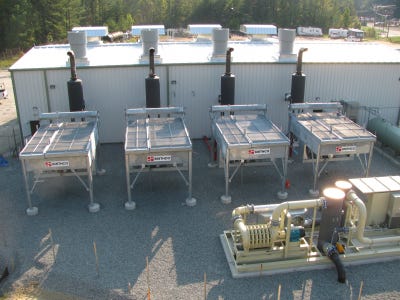 Despite heavy industry lobbying, Section 1603 grants expired at the end of 2011. “We lobbied hard, but I’m not aware of any plans to bring it back (in 2012),” says John Skinner, executive director and CEO of the Solid Waste Association of North America (SWANA).
Despite heavy industry lobbying, Section 1603 grants expired at the end of 2011. “We lobbied hard, but I’m not aware of any plans to bring it back (in 2012),” says John Skinner, executive director and CEO of the Solid Waste Association of North America (SWANA).
While the demise of Section 1603 is bad news for a growing industry, renewable portfolio standards are also contributing to the growth of LFGTE projects. In 2003, 13 states had enacted such standards, which require electric utilities to acquire some percentage of electric power from renewable energy sources. Today, 37 states plus Washington, D.C., and Puerto Rico have enacted renewable portfolio standards or renewable portfolio goals.
“Portfolio standards are helping LFGTE grow,” says Republic’s Held. “California, for instance, has set the standard at 33 percent. That is a real market driver.”
Pipeline-Quality Gas
LFGTE projects that produce electricity and heat can use LFG that has undergone dewatering and compression. Further processing can make LFG into high-BTU or natural gas that can be sold to pipeline companies. “To make pipeline-quality LFG, you have to scrub out the carbon dioxide, oxygen and nitrogen,” says Held.
According to EPA literature, three technologies can remove carbon dioxide: membrane separation, molecular sieves and amine scrubbing. While there are processes that can remove oxygen and nitrogen from LFG, the EPA recommends preventing air, which contains oxygen and nitrogen, from filtering into LFG collection systems in the first place.
 Collection systems use vacuums to draw LFG through into and through a network of pipes. The vacuums also draw surface air into the pipes. For landfill operators interested in producing high-BTU LFG, the EPA recommends repairing leaks in the landfill cover and adjusting the pressure of the vacuum used to draw gas through the piping so that it draws in less outside air.
Collection systems use vacuums to draw LFG through into and through a network of pipes. The vacuums also draw surface air into the pipes. For landfill operators interested in producing high-BTU LFG, the EPA recommends repairing leaks in the landfill cover and adjusting the pressure of the vacuum used to draw gas through the piping so that it draws in less outside air.
Furthermore, less air gets into wells in the interior of a landfill. EPA literature suggests sending that gas to the high-BTU processor, while directing gas from the perimeter wells to other uses.
Is this economically practical? Yes.
The Oak Grove Landfill in Winder, Ga., opened the nation’s first high-BTU LFGTE project in 2009 and earned recognition as the 2009 LMOP project of the year. Owned by United Waste Service, Inc., a unit of Republic Services, the landfill produces enough high-BTU gas to heat 8,000 homes.
Pittsburgh-based Renewable Solutions Group LLC, developed the project for the City of Winder. Newport, Del.-based Air Liquide provided the membrane separation technology and Toronto-based Golder Associates designed and built a five-mile pipeline to send the gas to the customer’s pipeline.
Gas sales — not tax incentives or grants — are paying development and construction costs, and the city of Winder expects to eventually earn $250,000 per year from gas sales.
Projects at the Pump
Landfills can sell processed high-BTU landfill gas to pipeline customers or compress it to make CNG for fueling vehicles, often including those that work at the landfill where the LFG was collected.
The first step in making CNG from LFG involves removing the carbon dioxide. EPA says CNG plants generally use membrane separation or molecular sieve processes, which scale down more economically than amine scrubbing to smaller plant sizes. After removing the carbon dioxide, the gas is compressed into CNG and sold or used to fuel landfill vehicles.
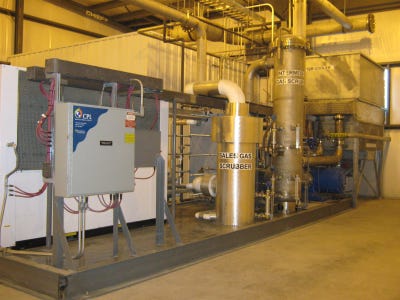 In 2008, FirmGreen Inc. of Newport Beach, Calif., and the Solid Waste Authority of Central Ohio (SWACO) joined forces to develop a Green Energy Center at the Franklin County Sanitary Landfill in Grove City, Ohio. The center converts LFG to electricity to power all of its operations. It also produces enough CNG to fuel a small fleet of SWACO and landfill vehicles. The project earned LMOP Project of the Year honors in 2008.
In 2008, FirmGreen Inc. of Newport Beach, Calif., and the Solid Waste Authority of Central Ohio (SWACO) joined forces to develop a Green Energy Center at the Franklin County Sanitary Landfill in Grove City, Ohio. The center converts LFG to electricity to power all of its operations. It also produces enough CNG to fuel a small fleet of SWACO and landfill vehicles. The project earned LMOP Project of the Year honors in 2008.
A key lesson taken from the project is that smaller landfills like the Franklin County facility also can make beneficial use of landfill gas.
LNG requires methane that is 96-percent pure, cleaner even than CNG. Houston-based Waste Management Inc. produces LNG from LFG at its Altamont Landfill in Livermore, Calif. Opened in late 2009, the plant initially processed 3 million cubic feet of LFG into 13,000 gallons of LNG daily, enough to fuel 300 garbage trucks. Today, the facility produces enough fuel to run 1,000 Waste Management trucks.
When EPA formed LMOP in the early 1990s, LFG uses included generating electricity for direct use, co-generation applications and electricity sales to the grid. Over the last few years, projects have begun to produce pipeline-quality gas as well as CNG and LNG to fuel vehicles. LFGTE is a small industry, to be sure, but it is proving that industries based on renewable concepts can innovate, grow and work.
Mike Fickes is a Westminster, Md.-based contributing writer.
You May Also Like


